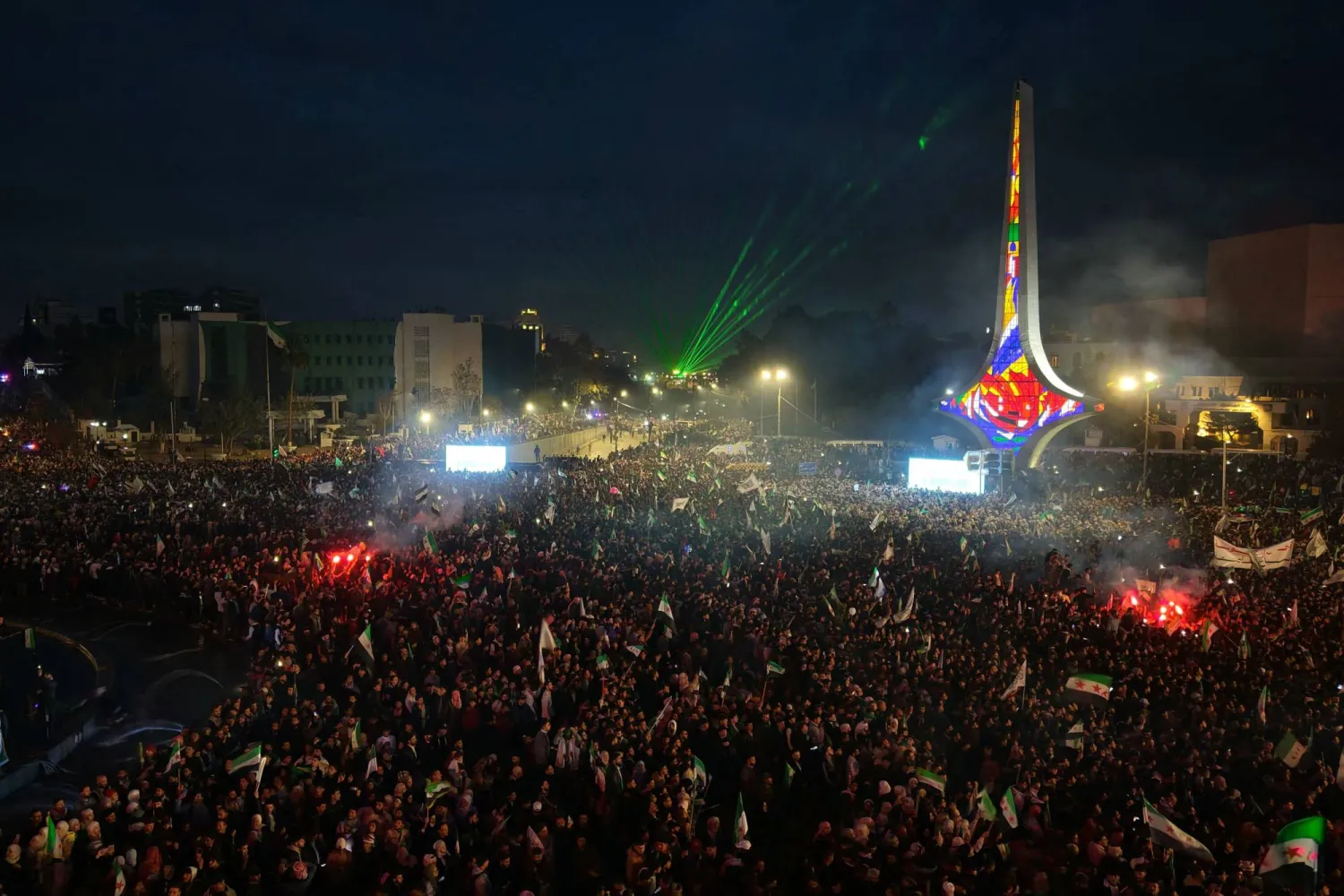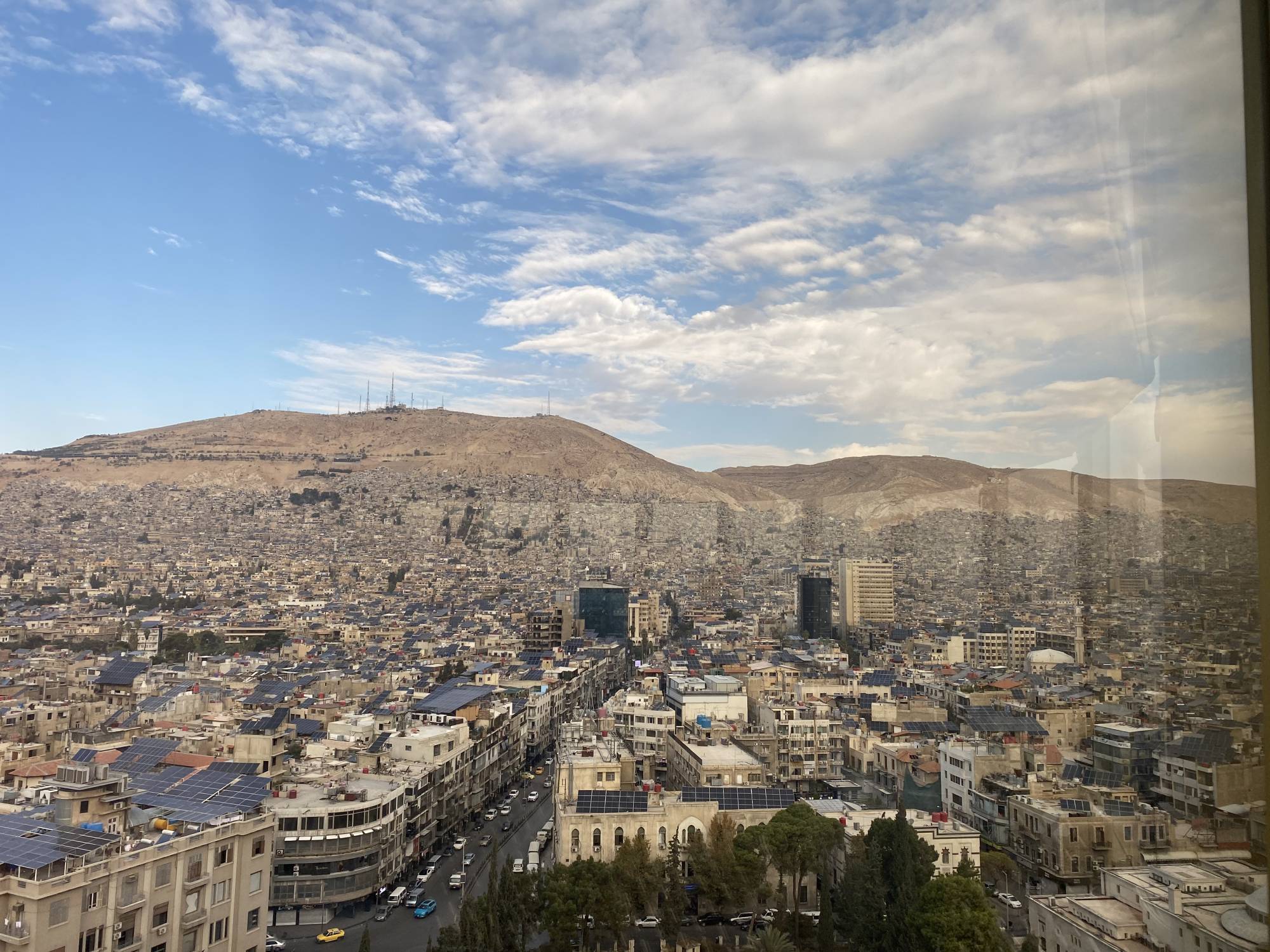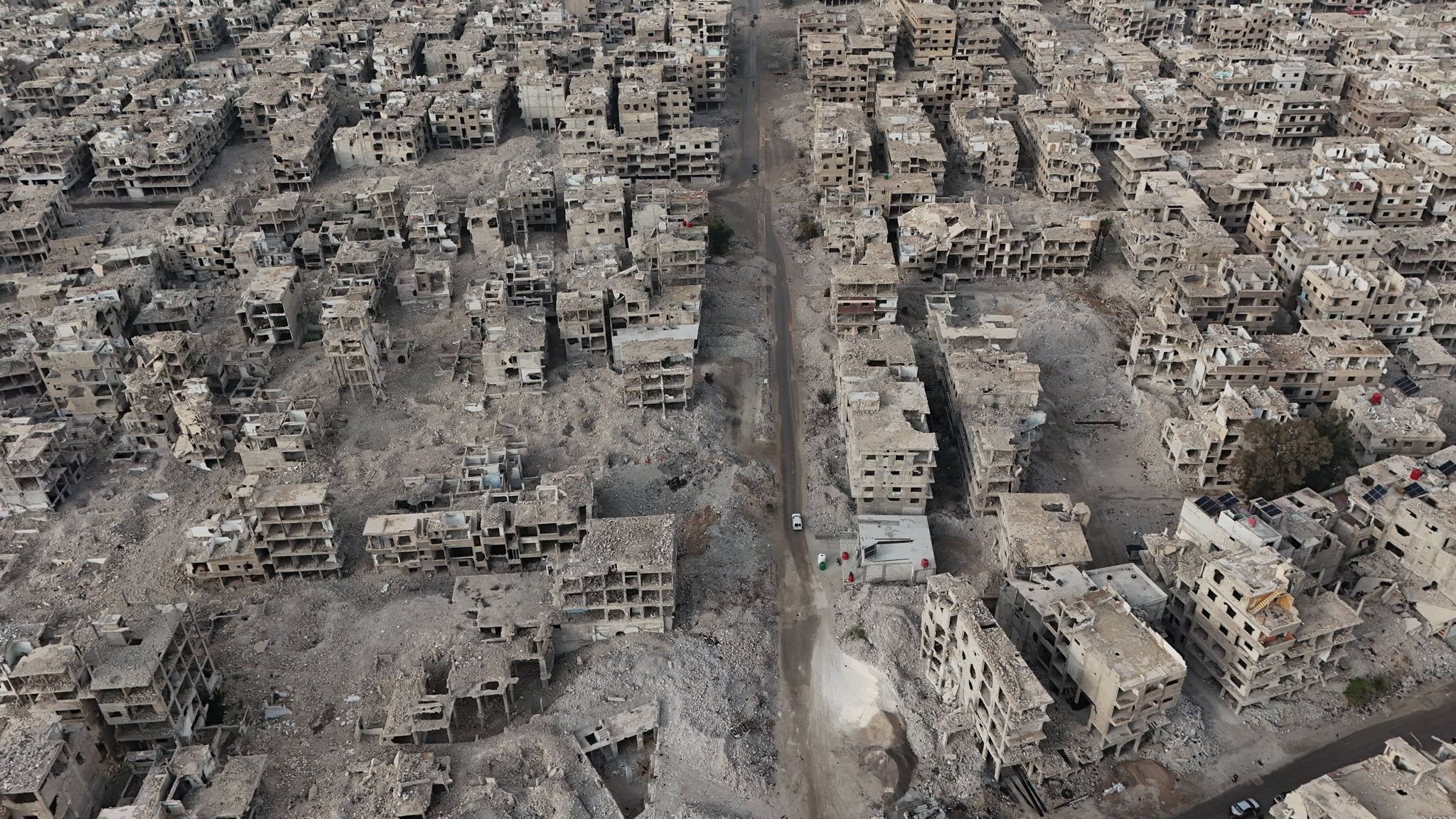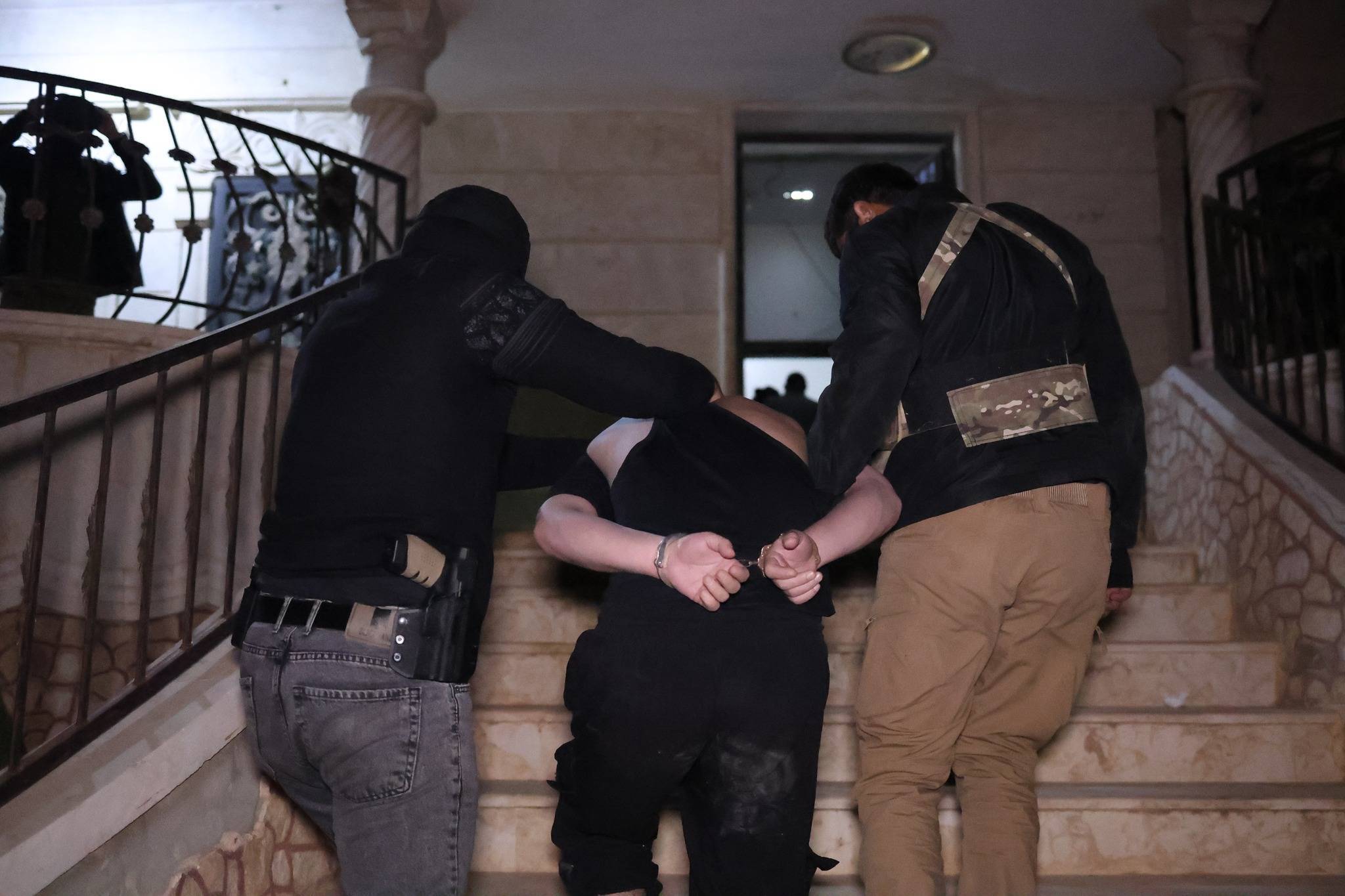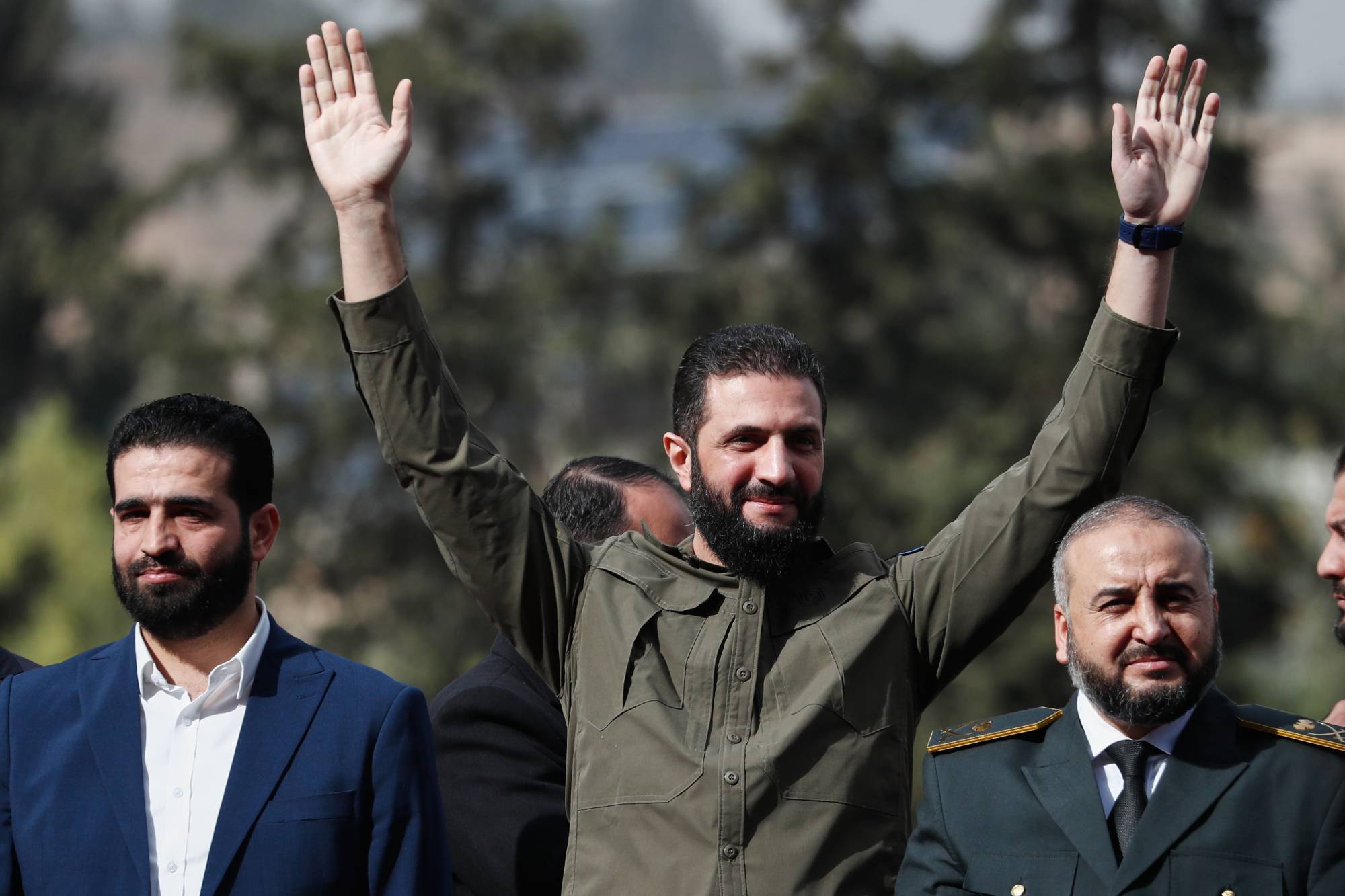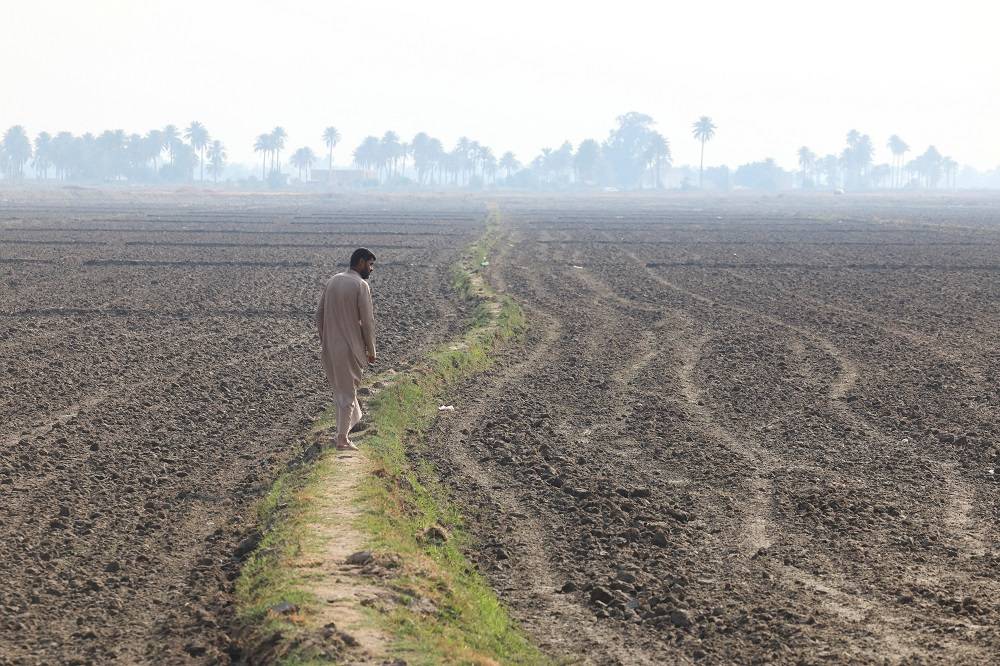On November 24, 2024, the Islamic Resistance in Iraq claimed what seemed to be its final attack on Israel. The announcement came two weeks after Syrian President Bashar al-Assad fled to Russia, with armed groups declaring “Syria is free.”
The claim, shared on a Telegram channel, marked the end of the “Axis of Resistance” operations before a ceasefire took effect in Lebanon.
On November 27, 2024, Syrian factions advanced in western Aleppo, sparking political alarm in Baghdad.
Rumors spread that “Baghdad could be the next target” after Assad fled to Russia, prompting increased diplomatic talks with Western and Arab capitals.
Iraqi forces have mobilized along the Syrian border, citing concerns over the infiltration of “armed elements” and fears of a broader collapse.
This buildup began earlier, during the Syrian factions’ rapid advance toward Damascus in just 10 days.
Since November 27, Iraqi army and Popular Mobilization Forces (PMF) leaders have visited the border more than six times, the latest on December 13, 2024.
Iraq faces uncertainty after the fall of Assad, Iran’s retreat, and the decline of Hezbollah’s power. Key questions now center on the “new rulers” in Damascus, the “future of Iranian influence,” and the “direction of Iraq’s political process.”
The urgency of these issues grew after UN envoy Mohammed Al-Hassan met with Grand Ayatollah Ali al-Sistani in Najaf on December 12, 2024.
“I briefed Sayyed al-Sistani on recent UN discussions about Iraq,” Al-Hassan said.
“The region is changing rapidly, and Iraq needs bold, urgent decisions. We urge leaders to act quickly and take overdue steps toward reconciliation and unity,” he added.
Asharq Al-Awsat spoke to representatives of six Iraqi parties about Al-Hassan's remarks.
Many speculated about a “collapse of the political system” or a return to pre-2003 Iraq, with most concerns coming from traditional Shiite parties.
Recent events have revolved around Prime Minister Mohammed Shia Al-Sudani. On December 10, 2024, US CENTCOM chief Gen. Michael Kurilla met Kurdish SDF officials in Syria before heading to Baghdad to meet Sudani, who reaffirmed Iraq’s position on “respecting the Syrian people’s choices.”
The following day, Sudani visited Jordan to meet King Abdullah II, who later traveled to Abu Dhabi to meet UAE President Sheikh Mohammed bin Zayed. Sudani returned to Baghdad, received a call from Saudi Crown Prince Mohammed bin Salman, and met with a US delegation. Meanwhile, Germany’s defense minister visited Baghdad and Erbil.
Talks across the region have focused on “securing borders” with Syria. International discussions, involving US President Joe Biden and other Western officials, highlight a global push to bolster security in Syria’s neighboring states.
Despite these efforts, Shiite leaders in Baghdad remain unclear on Iraq’s future or how to handle mounting regional pressures.
A former government advisor described Iraq’s current situation as the most fragile in years, with Syria’s shifting dynamics raising serious questions for Iraq’s political stability.
Iraq Faces Rising Tensions After Assad’s Fall
Mutual fears are growing across the Iraq-Syria border. In Syria, concerns focus on Iraqi groups alarmed by the new regime, while in Iraq, fears center on potential unrest at the Sayyida Zainab shrine in Damascus, which could destabilize the region.
A senior Shiite figure told Asharq Al-Awsat that Assad had granted Iran full security control over the shrine, but this arrangement ended with his departure.
“Now, everyone is afraid,” the source said, though international assurances suggest Damascus will not unravel as quickly as Assad’s fall.
Since Assad fled to Moscow, Iraqi Shiite communities have voiced concerns over the safety of Shiite shrines in Syria, amplified by a flood of social media posts. However, Iraqi diplomats have engaged regional powers to prevent escalation, warning that even a minor misstep could ignite conflict.
Inside Iraq, fears are mounting among Shiite leaders about losing control over factions or being outmaneuvered by Sunni and Kurdish rivals. These groups might exploit Iran’s retreat, seen by some as a "tactical withdrawal," to shift Iraq’s political balance.
Shiite politicians also worry the Iraqi premier could distance himself from Iran-aligned factions and pursue a new political deal, using “protecting Baghdad” as his justification.
“Sudani holds a strong card,” one political adviser noted.
Publicly, Shiite leaders focus on warnings about Syria’s “extremist rule” and the risk of militants crossing into Iraq. Privately, they remain unsettled about Iraq’s next steps as regional dynamics shift.
Recent developments underscore these tensions. Sudani reportedly sent a message to Syrian authorities, pledging non-interference while seeking assurances about the safety of Shiite communities.
Iraq’s stance toward Syria shifted after airstrikes hit convoys carrying Shiite fighters and Syria’s army collapsed. These events freed Sudani from earlier obligations to Iran-backed factions, allowing him to adopt a more flexible position.
Iraq's Political Crossroads: Regional Pressures and US Strategy
A Western diplomat in Baghdad, who spoke anonymously, said that “stability in Iraq is now a top priority for the international community,” but regional pressures are pushing to dismantle the militias that have fueled instability.
This comes as political discussions focus on a question raised by many: Is the fall of regimes in the Resistance Axis moving toward Iraq? Some consider it an unlikely scenario without solid evidence.
An Iraqi politician, who claimed insight into US-Iraq talks, suggested that the US has engaged Israel, which wants to “finish the job of removing the Resistance Axis, with Iraq as the last standing member.”
The theory suggests that Israel sees Baghdad as “Iran's most important asset,” and Tehran might use Iraq’s resources to revive the collapsing axis, meaning the crisis won’t end with Assad.
To counter Israel’s objectives, the US reportedly proposed an “alternative plan” with similar goals.
An Iraqi adviser explained that the new approach involves disarming militias, integrating the PMF into the state, and removing militia offices from Sunni areas.
This adviser also said that the US wants to hold new elections in Iraq and believes “Iran will have to accept this new reality.”
However, figures from Iraq’s Coordination Framework dismissed this as “fantasy,” although they acknowledge that messages reaching Baghdad indicate that “cutting Iraq’s ties to Iran is now seen as essential.”
Sidelining entrenched groups in Iraq’s government is difficult, and some believe this could only be achieved through negotiations with Iran.
A political adviser noted, “It’s hard to remove Iranian influence so easily. They are involved in ongoing discussions in the region, and if Iraq’s political situation changes, Iran will be a part of it.”
The Middle East’s Shifting Landscape and Sudani’s Challenge
In political circles, a simple question is being raised: “Why should Baghdad be targeted when it stayed out of the support war and didn’t intervene to prevent Assad’s fall?” This reflects a desire to avoid the consequences of the post-conflict situation.
But this is not the regional reality. A series of events suggests that Iraq must change to avoid difficult choices ahead.
A Western diplomat told Asharq Al-Awsat, “The region has changed... it’s clear that the dynamics have shifted, and players must adapt.”
For the first time since 2003, excluding the threat from ISIS in 2014, Iraq’s Shiite forces face mounting pressures, forcing them to decide how to adapt politically.
During his visit to Baghdad on December 13, US Secretary of State Antony Blinken didn't wear a bulletproof vest, unlike his November 2023 trip, symbolizing a more relaxed approach.
He joked with Sudani, saying, “It’s wonderful to fly in from the airport and see the vitality of the city.”
However, Blinken’s reassuring words—calling it the right moment for Iraq to strengthen its sovereignty—are met with skepticism in Iraq.
Officials fear these may be just the comments of a diplomat in his final month, with a Republican administration likely to take a harder line on Iran, and Iraq possibly being the last target of “maximum pressure.”
Iraqi politicians are convinced that “something will happen,” but opinions differ on what that might be. There's speculation about a possible Israeli strike, or if Washington plans to protect Iraq through a new deal aimed at limiting Iranian influence.
Sudani’s aides downplay the likelihood of military strikes but hint at necessary political changes, which could soften the impact of a future US administration under Donald Trump.
However, these changes could create risks, as Sudani’s opponents in both Baghdad and Tehran fear unforeseen consequences.






